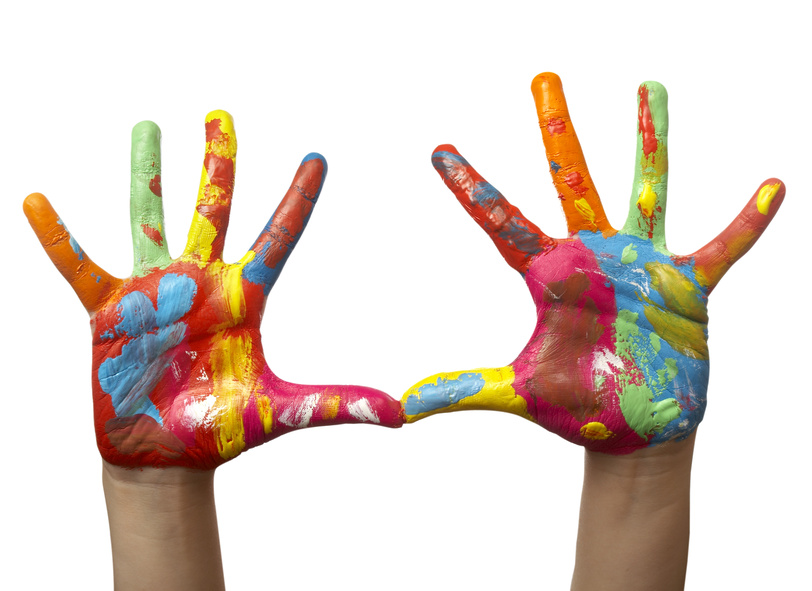 One of the most talked about aspects of education is integrating creativity into the traditional classroom. It is being said that the traditional classroom suppresses the interactive and innovative learning possibilities of children. Therefore, newer methods brimming with creativity are being employed for imparting education to today's learners.
One of the most talked about aspects of education is integrating creativity into the traditional classroom. It is being said that the traditional classroom suppresses the interactive and innovative learning possibilities of children. Therefore, newer methods brimming with creativity are being employed for imparting education to today's learners.
Convergent and Divergent Thinking
These terms are closely related with the way we seek solutions for a problem. Let's break up the terms for you. Convergent thinking implies looking for the single best answer for a problem. This concept is what traditional classrooms have been pushing children towards. What's in trend now is divergent thinking. With this technique, students are encouraged to think of various good answers to a problem. This opens up a treasure trove of fresh, creative and feasible solutions. This is one of the foremost goals of augmenting creativity in education. The ideal situation is when the convergent and divergent thinking work in harmony with each other. The Geneplore model explores the relationship between the two.
Ways to Promote Creativity in the Classroom
Inculcating creativity among students should commence at the school level to induce innovative thinking at all levels. There are many ways to stimulate such an atmosphere in the classroom, a few of which have been discussed below.
1. Embracing Creativity as a Part of Learning: Now this is the responsibility of the teacher. A creative classroom enhances the learning process, while making education engaging. Incorporating innovation in the classroom does not actually require genius. Using practical scenarios to explain a concept, encouraging interactive activities to explain a procedure, demonstrating different ways of coming to a solution of a problem are a few of the ways to embrace creativity in learning.
2. Improvising: Planning a lesson could be done in two ways. If you are a teacher, you could opt for the same old traditional concepts, or you could give it twist. If you are not blessed with the spontaneous flow of ideas, there is always the space age technology called the internet that could come to your aid. Ditch the old and try out different methods. You could bring in a sapling from the garden to demonstrate the parts of a plant, you could help your students to a few educational videos, talk to your authorities to arrange for an educational outing, segregate the class into groups and assign projects related to the topics covered in the syllabus and so on. Try not to repeat the ideas too frequently since students tend to lose interest on repetition.
3. Encourage Thinking Out of the Box: Interact with your students. Encourage them to speak up instead of pushing down shovels of lessons down their heads. If they come up with an idea, try implementing that in the classroom if that is relevant and feasible. Sometimes the oddball activities work wonders.
· 4. Use a Creativity Model: You could try implementing different creativity models to induce an innovative learning experience. The Osborn Parnes model is one of the oldest and quite effective model that could be incorporated. It can be broken down into 5 steps of:
- Mess finding
- Fact finding
- Problem finding
- Idea finding
- Solution finding
- Acceptance finding.
Apart from that, you could also use the Incubation model which includes 3 steps as follows:
- Heightening Anticipation: Creating the desire to know
- Deepening Expectation: Involves brainstorming
- Keeping it going: Extending the learning procedure beyond the classroom.
5. Allowing Room for Mistakes: Nobody is perfect. If you do not allow your students to make mistakes, they would never learn to come up with the solutions. Creativity flows in a positive environment where mistakes are allowed and rectified. Encourage your students to ask questions. You could allow your other students to answer the queries if they wish. This would promote an interactive learning experience in the classroom.
6. Encourage Collaborative Learning: This process of classroom learning is catching on quickly nowadays. You could chalk out the basic concepts to simplify them to your students and then you could orchestrate a group discussion in the classroom. This benefits the learning process by making the lessons easier and more interactive for the students to grasp.
It is being believed that students of the next generation would encounter jobs up for grabs that have not been invented yet. As crazy as it may sound, this is quite true and arming the next generation with ideas and innovation to make the most of it, is essential. Creativity takes on new meanings with different individuals. Accommodating such difference and allowing a harmony among the same could be a bit of an oxymoron, but feasible, if the right procedures are employed. Many online educational portals take care of such challenges and try to accomplish the right goals. Practicing the same consistently is crucial in developing the true sense of innovative thinking among students.
Information Shared By My Private Tutor








